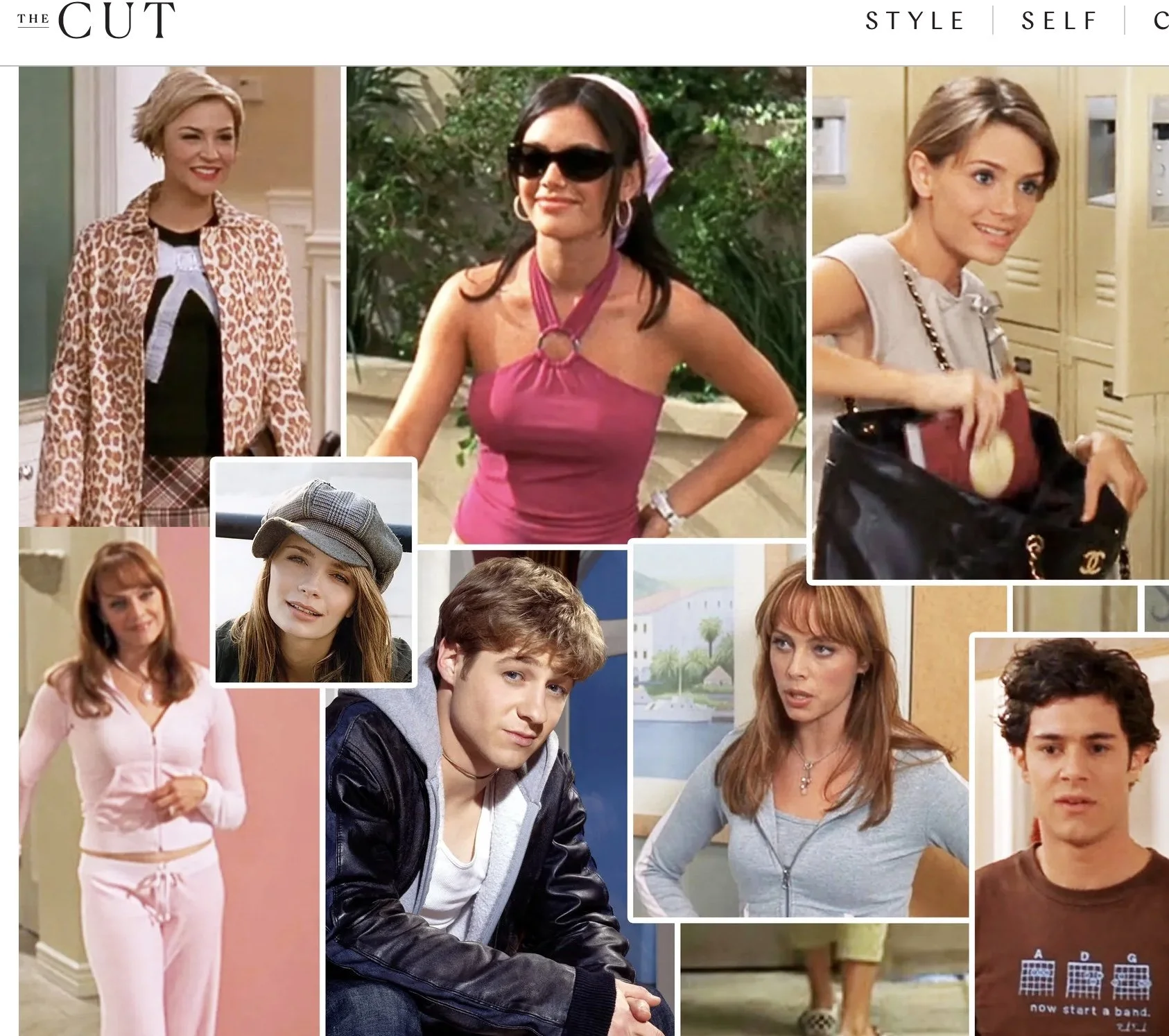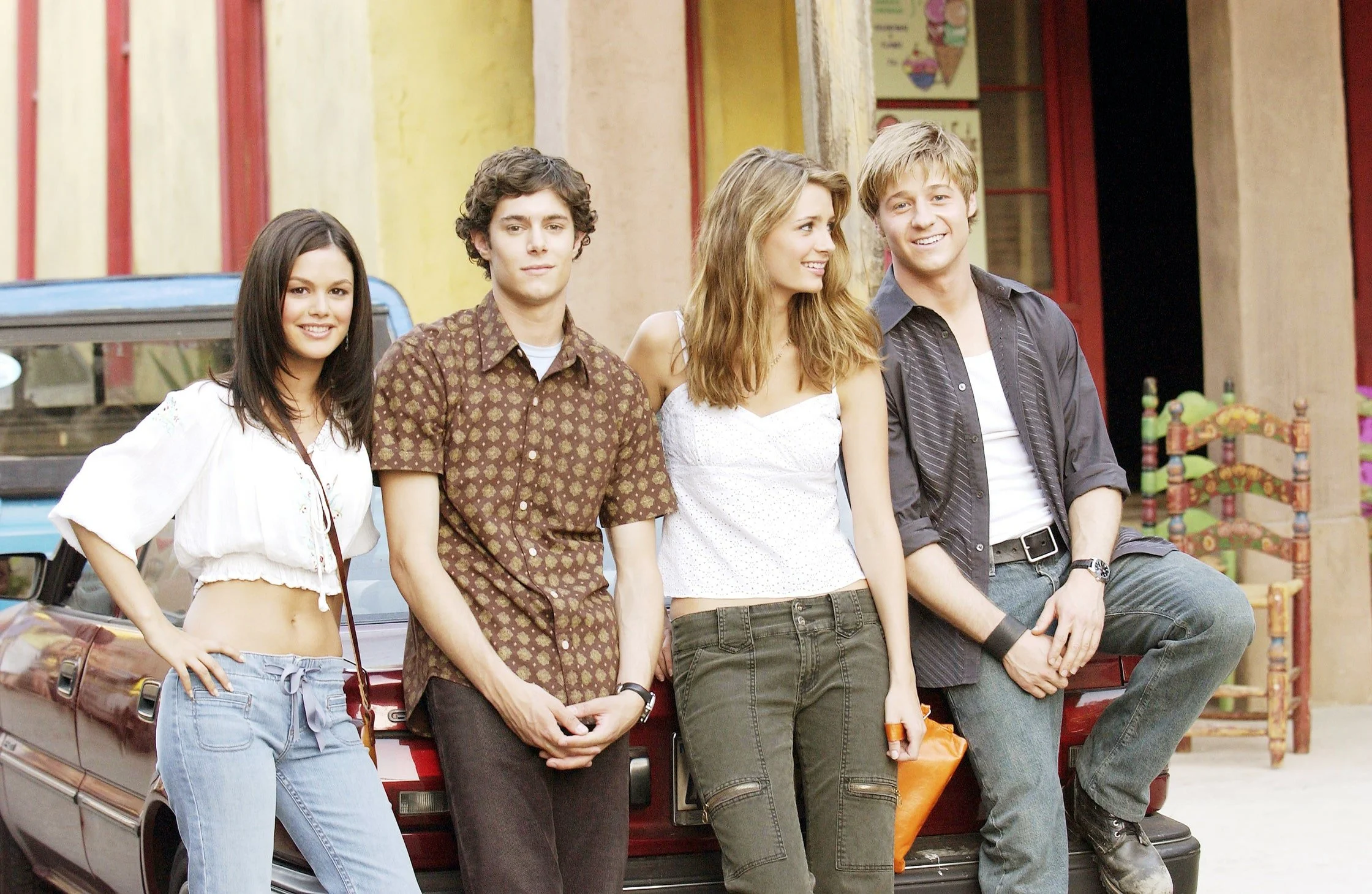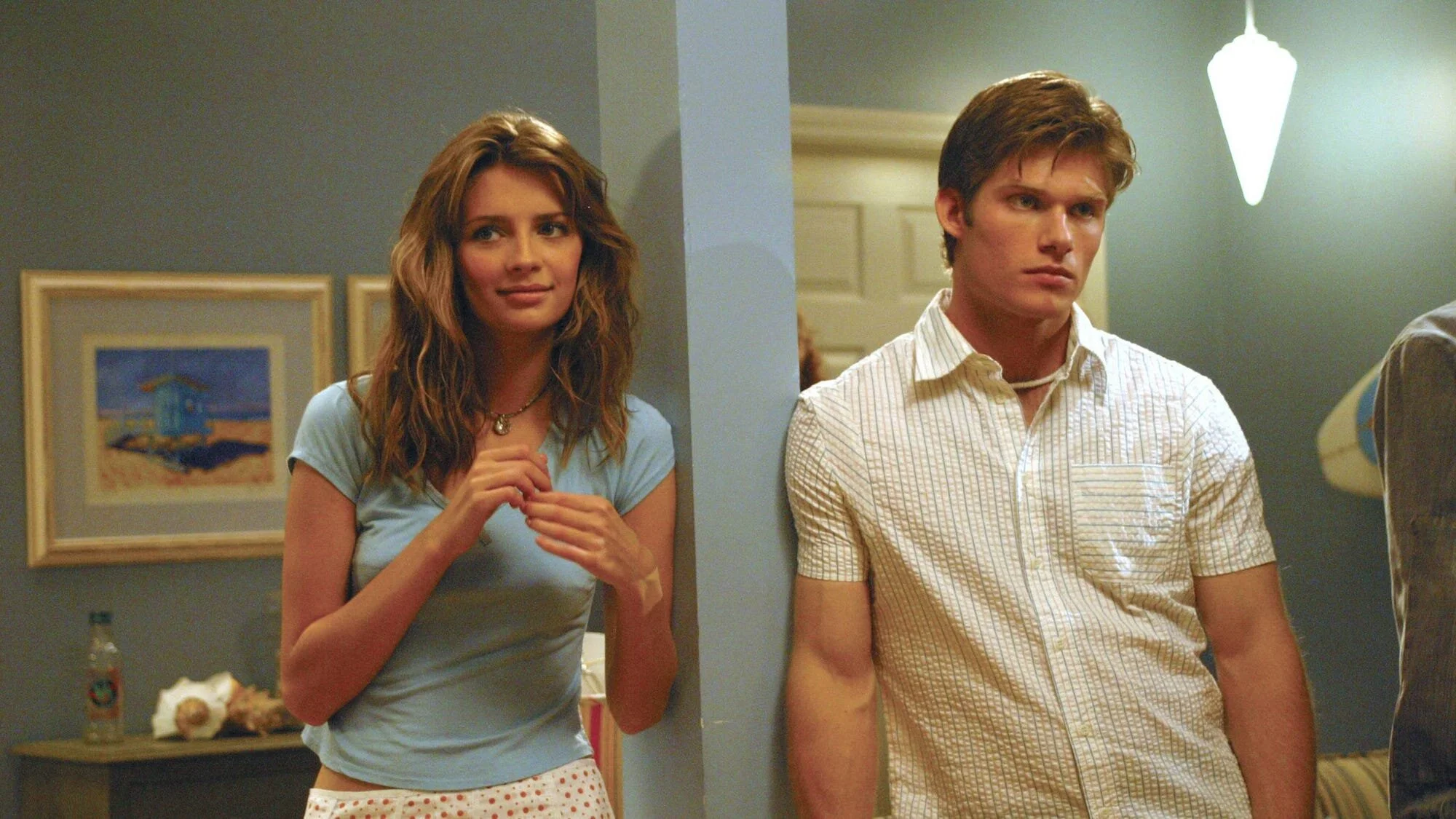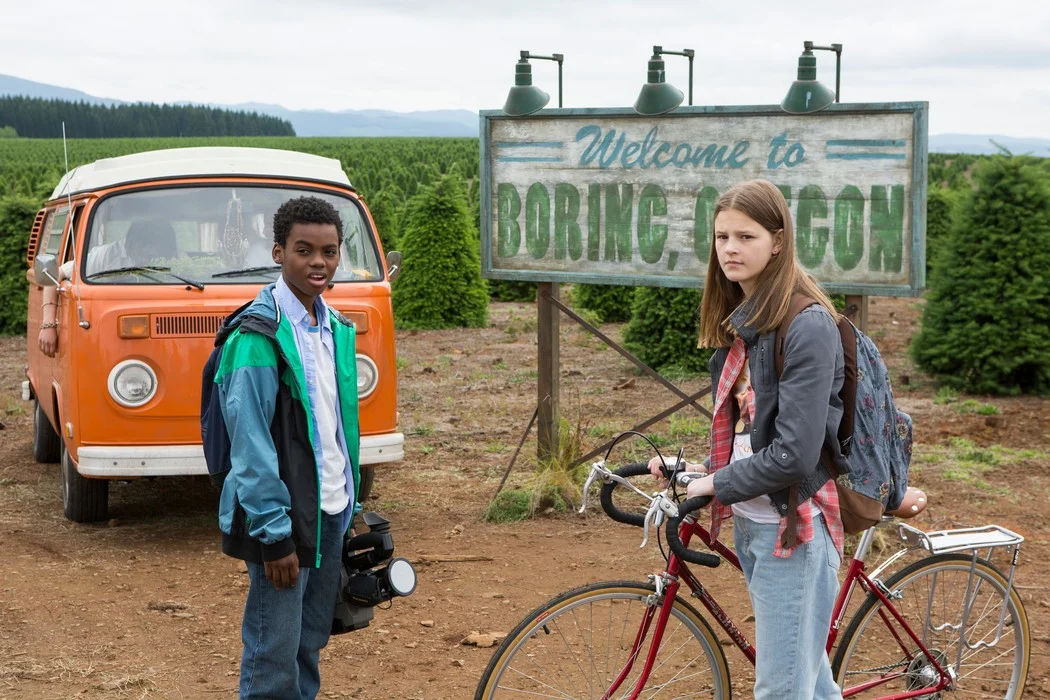Boho Chic Is Back. Again. How Did We Get Here? Kate Hudson, Rachel Zoe, Isabel Marant, and other experts break down the style phenomenon they helped create and explain its sudden resurgence
Maybe it started with Jane Birkin on the beach at Cannes in 1969, wearing a white crocheted crop top and white jeans. Or maybe it was at Woodstock the same year, with those hippies in their colorful vests and tangles of beads. To be sure, Kate Hudson as Penny Lane, in that shearling-collar coat and those peasant blouses in 2000’s Almost Famous, which was set in the ’70s rock world, brought it all back into focus.
Boho fashion, in the contemporary sense, has murky origins. It only vaguely references the nomadic lifestyle of the Romani people for whom the French word bohemién was coined. (And that itself was a misattribution, because the Romani people did not originate from the Bohemia region in the Czech Republic.) It has taken on a you-know-it-when-you-see-it quality and usually includes some of the following elements: flowy, frilly layers; fringe; floral and paisley prints; abundant layered jewelry; and over-the-knee boots.
From Penny Lane in theaters, boho made its way to the small screen—with Blake Lively’s Serena van der Woodsen on Gossip Girl and Mischa Barton’s Marissa Cooper on The O.C.—and the street, where celebrity style was starting to become a phenomenon documented in real time by a new media format called blogs. The early-to-mid-’00s era—arguably the most important in terms of boho’s mass appeal—was also ruled by Nicole Richie in her oversize sunglasses and scarf headbands, Mary-Kate and Ashley Olsen in turquoise and broderie anglaise, and the unforgettable Kate Moss at Glastonbury and, well … everywhere.
Now, here we are again, thanks to Chemena Kamali’s vibe-shifting debut as creative director of Chloé, where her interpretation of the storied label for Fall 2024 was exploding in sheer ruffled layers. To understand the phenomenon then and now, we went straight to the sources: the designers, stylists, and stars who helped shape our understanding of “boho chic” in the 2000s.
20 Years Ago, The O.C. Gave Us Looks Now they are back.
The O.C., a teen drama set in California, gifted our tween selves with campy characters, soapy storylines, and above all, looks we couldn’t afford. When the show premiered in the summer of 2003, we welcomed an eclectic and more-is-more aesthetic, bidding adieu to the minimalism of the ’90s. Mischa Barton’s portrayal of Marissa Cooper made her the undisputed “It” girl, repping brands like Chanel; Adam Brody, who played Seth Cohen, single-handedly made geek chic; and thanks to Summer Roberts, played by Rachel Bilson, PacSun and Abercrombie & Fitch became household names. Two decades later, to the delight of some and horror of others, many of the same trends are back. We look back to The O.C. as a treasured time capsule of Y2K fashion when Lacoste polos, American Apparel, and (tragically) low-rise jeans were inescapable; Marc Jacobs, Betsey Johnson, and Jimmy Choo ruled supreme and it was all about accessories like scarves for belts, sequin accents, fringe details, and velour anything, really.
“Fashion, in general, runs on a 20-year cycle, so it makes perfect sense that, over the last few years, we’ve seen noughties fashion making a comeback,” says Alexandra Welker, costume designer of season one.
How The O.C.’s Three Costume Designers Remember the Show—Camisoles, Low-Rise Jeans, and All
Twenty years ago, Fox’s teen drama, The O.C. premiered. Feel old yet? The premise now feels familiar: A down-on-his-luck teenager, Ryan Atwood (Ben McKenzie), attempts to assimilate into the rich Orange County, California lifestyle after he is taken in by the wealthy Cohen family. In 2003, The O.C. was a complete phenomenon—the cast became stars, California culture became cool, and Death Cab for Cutie became a fixture on emo playlists.
It also had a huge impact on fashion at the time. Watching it as a teenager, I desperately wanted Marissa Cooper’s (Mischa Barton) low-slung Marc Jacobs skirts and to have a Seth Cohen–esque (Adam Brody) boyfriend who wore Paul Frank tees. It impacted my personal style so greatly at the time, I tested out velvet blazers, skinny scarves, and even a truly dreadful newsboy cap. But tendrils of The O.C.’s style still linger in my wardrobe today—mostly as a penchant for flats and Converse as an alternative to the heels that I still can’t maneuver in.
20 Years On, The OC’s Costume Designer Shares The Secrets Behind Marissa Cooper’s Effortless Californian Style
On the 5 August it will be 20 years since Noughties teen drama The OC first hit screens. The show, which followed the messy, glamorous lives of teenagers Marissa, Ryan, Seth and Summer, living in the affluent California surf town Newport Beach, was an immediate hit when it was released in 2003. The fashion was an integral aspect of why the show such a hit and was as important as the indie soundtrack in bringing this world to life.
The “Newpsies” wore Juicy Couture velour hoodies to travel from their McMansions to “yogalates”, Marissa Cooper was the teenager who wore Chanel to prom and Ryan Atwood and his white vest tops moved into the Cohen’s pool house. An honourable mention also goes to Seth Cohen for his band T-shirts and Chrismukkah jumper. From ruffled miniskirts to Uggs to super low-rise jeans; the programme was an originator and escalator of some of biggest trends of the mid-Noughties.
Costume designer Alexandra Welker is to thank for that. “When it came out, ‘casual California style’ was not a thing in culture,” says the stylist, who was inspired by ’70s and ’80s skate and surf culture. “But it very much became a thing.” In fact, while no designer would lend Welker clothes for a charity fashion show in the pilot – “we had to borrow things from Rent The Runway” – by the time season one got going? “Brands were throwing samples at us,” she laughs, explaining that they often turned them down. “There’s a Chanel dress that Marissa wears when she drunkenly crashes a car. I think we filmed her climbing out of a window in that.”
Low-rise jeans, checkered Vans, and that iconic leather necklace: How 'The O.C.' costume designer accidentally became a '00s trendsetter
"Costume design is just visual shorthand for who we are and where we're from and what we're going through in our lives," Welker said. "It's our hopes and dreams and aspirations and all that other stuff we don't necessarily realize we're telegraphing."Ryan (played by Ben McKenzie) comes in hot with a signature outfit: White v-neck T-shirt, gray hoodie, black leather jacket, and a single strand of rawhide leather tied around his neck.”
The OC’s Seth Cohen Was a 2000s Style Icon
Costuming means telling a story in miniature—who a character is and what their motivations are, all communicated in a glimpse. Welker (whose other styling credits include American Pie and Joe Dirt) saw Seth Cohen as an opportunity to do some zagging. “Seth’s dad was a middle class lawyer who marries up in terms of the economic social strata,” she says, “[so I imagined Sandy] would be supportive of him being his own man as an only child. I just figured he was the kid that would jump on his skateboard and go to the record store and be searching for obscure vinyl. And then right next to the record store was like the cool thrift store run by the lady from Pretty in Pink.”
‘The Mighty Ducks: Game Changers’ lives up to the original trilogy
Disney+ recently released films, such as “Soul” and “Raya and the last Dragon,” which have received positive feedback from audiences. Its latest release, “The Mighty Ducks: Game Changers,” is yet another win for Disney with little flaws and a refreshing take on what sports actually entail. This new addition to the “The Mighty Ducks’’ franchise provides a new take on the Ducks hockey team as bullies. The new series will be a 10-episode-long family-comedy series.
17 Thoughts I Had Re-Visiting the Fashion on The O.C.
The O.C. perfectly captured what rich, Californian students would wear to class at the time. (Fun fact, however: its costume designer Alexandra Welker said many of Marissa’s Chanel bags were fakes in the earlier seasons, due to a limited costume budget.) But even though I never thought we’d wear layered tank tops ever again, Y2K style is trending again. TikTok stars are embracing the look, and brands such as Juicy Couture and Von Dutch are even making a comeback. But while the 2000s may be having a revival, I wondered: do the clothes in Orange County still hold up? Or are they a bit too true to what Y2K style was—foibles and all?
Teenage Bounty Hunters: a refreshing, clever and funny show that subverts expectations
Part teen drama, part comedy and part coming-of-age story, the snappy and meticulously planned series has a lot more going on than first appears
Jenji Kohan-Produced Netflix Series ‘Slutty Teenage Bounty Hunters’ Casts Its Leads
Maddie Phillips and Anjelica Bette Fellini will star as the titular teens in the new series executive produced by Jenji Kohan. Phillips and Fellini will star as fraternal twin sisters Sterling and Blair Wesley. In addition, Kadeem Hardison has been cast as Bowser Simmons, while Virginia Williams has been cast as Debbie Wesley.
In the series, after joining forces with a veteran bounty hunter (Kadeem Hardison), sixteen-year-old fraternal twin sisters Sterling (Phillips) and Blair (Fellini) dive into the world of bail skipping baddies while still navigating the high stakes of teenage love and sex. Sterling and Blair plan to excel in all aforementioned extracurriculars, despite the watchful eye of their buttoned-up community.
The OC's costume designer reveals Marissa Cooper wore FAKE Chanel bags on the show Alexandra Welker has revealed some insider fashion secrets about the hit Noughties teen drama
If you were a teenager in the early Noughties, then you're likely to have had a huge obsession with The OC .
The American TV show followed the often scandalous lives of wealthy and stylish teens in the high-class world of Newport Beach.
It rocketed cast members Benjamin Mackenzie, who played tearaway Ryan Attwood, Mischa Barton(troubled girl-next-door Marissa Cooper), Adam Brody (the awkward but witty Seth Cohen) and Rachel Bilson (Seth's crush Summer Roberts) to fame and the show ran for four seasons.
When we weren't shocked by the drama, we pored over every detail of Marissa and Summer's enviable designer outfits.
But as The OC celebrated its 15th anniversary this month, Season One costume designer Alexandra Welker dropped some insider information.
Netflix’s New Series Is Set in ’90s Oregon. What’s the 411?
On February 16, Netflix drops Everything Sucks, the latest in its line of exclusive series (see the ’80s-seeped Stranger Things and women’s wrestling fashion fantasy Glow). This time around, the online streaming service—quickly turning into a Hollywood studio rival—turns its gaze on 1996 Oregon, centering on the complex relationships between a high school’s AV club and drama club. As someone who was president of an Oregon high school drama club in 1996 (shout out to my fellow Salemites), I was tasked with casting my editor’s eye over the series to see how it measures up to my own memories of the ’90s-era Northwest.
Thirty seconds in and we’ve already had slap bracelets, a tiny pink-haired troll, neon graphic backpacks, and the flash of a Tori Spelling lookalike while that onesong from the Mighty Mighty Bosstones plays. So yeah, we’re off to a solid, authentic start. In fact, set decorator Jenelle Giordano and costume designer Alexandra Welker deserve all the accolades for their so-familiar-I-forgot-it-wasn’t-current world where the kid with the Zack Morris floppy hair mixes with the sweet girl in the Tori Amos tee.
How the Gen-Z cast of Netflix's 'Everything Sucks!' transformed into 90s kids
The throwback fashion is one of the most distinctive elements of the show — especially when so many of today’s designers are gleaning inspiration from the 90s. What are some of your favorite pieces you wear in the show?
Jahi Winston: I had these like Shaq shoes. And they pump, and as soon as I put them on it felt like 90s hip hop. [ Sings Kriss Kross’s “Jump.”]
Peyton: I had this sweatshirt and it looks so much like the things I wear now. All the 90s thing are coming back now, like fanny packs and chokers. It’s exactly what I wear.
Sydney Sweeney: I want to dress like my character, Emmaline. I loved all her Ring Pops. I ate so many of them.
Tyler: Yeah, we got all of our costumes from stores that are selling these clothes today. It’s funny, because I’d go to Urban Outfitters and see half of my costume pieces there. My favorite piece was these tiger-striped Zubaz pants. And these skater shoes that looked like loaves of bread on my feet.
Elijah: Mine was my trench coat. I had a love/hate relationship with it because it was so warm. I think how they found it was this lady had this garage — it looked really sketchy, there were cobwebs everywhere — and they found this old Cold War-era trench coat. As soon as I put the jacket on, I was Oliver. It was like a superhero putting on his mask.
THE 'EVERYTHING SUCKS!' COSTUMES REFERENCE ALL THE '90S CLASSICS, FROM 'MY SO-CALLED LIFE' TO 'THE CRAFT'
To research how to costume Boring High authentic to a small Portland suburb, costume designer Alexandra Welker threw herself into the era, analyzing Adrienne Salinger's 1995 portrait book, "In My Room: Teenagers in Their Bedrooms," three-years-worth of requisite Delia's catalogs, current-day "best of '90s fashion trends" listicles and high-school yearbooks from the decade, shared by her local, Oregon-native crew members.
As ‘Mad Men’ Ends, the Woman Behind the Costumes Is Just Getting Started
But when she met a costume designer, Alexandra Welker, at a party, her eyes lit up with stars. “When I was growing up, my mother was always into old movies, and from the time I was a very little girl, she was taking us to the revival theater in Chattanooga, the Tivoli,”
Costume Stories, This Week: Noah and Hannibal
A TV cop drama ‘with a twist’. Costume designer Alexandra Welker goes carnival, and loves it.
Grimm's Carnival Commences! Plus: Original Costume Sketches From the Ep
“Our circus had a strong steampunk flavor, so I did lots of research into old-fashioned circus costumes, and current steampunk fashions,” series costume designer Alexandra Welker tells TVLine.
'Grimm': Danielle Panabaker's magical leather and copper bikinis
“From a design standpoint we are trying to make our creatures in human form look as real and normal as possible,” Welker continues. “And when they morph, they are still in human clothes, and every so often we get to do more creative costumes.”
Costumes of The O.C. - 10 Year Anniversary
In The O.C., we see a wonderful mix of well-known character types and the costuming is very successful in helping to support these archetypes. Here clothing serves as symbolism for each character’s place in the society. Years before the incredibly successful Gossip Girl (another Josh Schwartz created series), The O.C. proves less flashy than its East Coast counterpart. Wonderfully capturing the spirit of California, these trust-fund kids trade the power suits and overcoats for swimsuits and beach wraps. As Donnie, a waiter at the Crab Shack and minor character, accurately sums up, “Welcome to Newport, where things only appear to be casual.”
Alexandra Welker, “Grimm” Costume Designer By Rachael Stanley, December 2012
If you need a break from the CSI, Law and Order genre of crime shows then Grimm just might be the ticket. This police procedural episodic set in Portland is anything but run of the mill. The synopsis: Detective Nick (David Giuntoli) of the Portland police finds out he is a descendant of the brothers Grimm, who were less storytellers and more ancient crime profilers who were able to recognize the supernatural creature world. Nick has inherited this ability and begins to recognize creatures in the modern world. As he balances his pledge as a police detective to uphold the law and his ancient responsibility to destroy evil creatures, the audience goes along for a ride that is suspenseful, scary, and sometimes tongue-in-cheek.



















